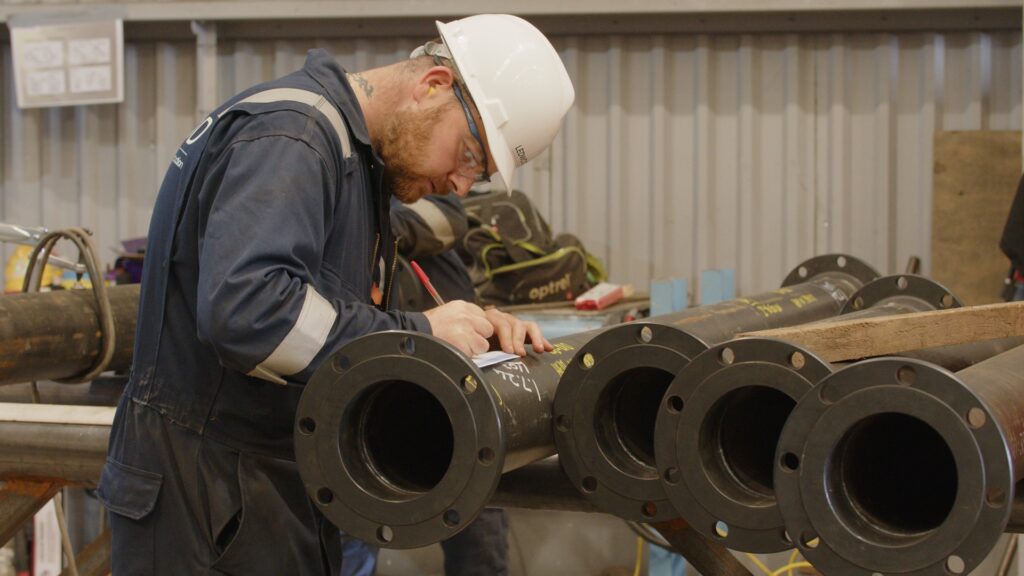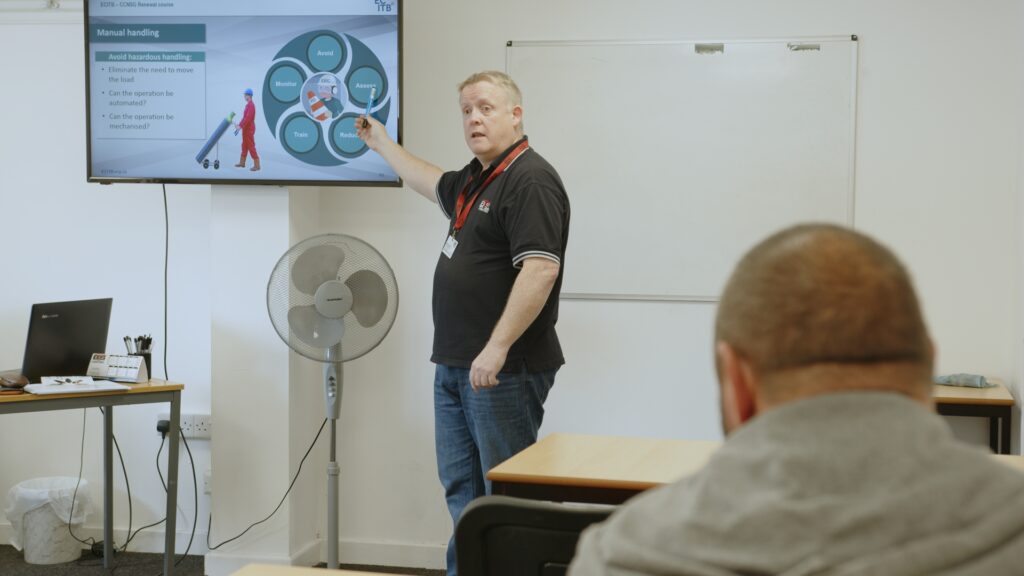By Engineering Construction Industry Training Board (ECITB) Chief Executive Andrew Hockey
World Day for Safety and Health at Work today (28 April) provides a great opportunity to highlight the crucial role safety training plays in helping reduce accidents and lost-time incidents in the engineering construction industry (ECI).
Courses that develop knowledge and understanding through training and shared experience can ultimately help to save lives.
By developing a positive health and safety culture, this training ensures that safe and healthy working practices become second nature to everyone – which should be a key priority for us all in industry.
The latest statistics on work-related injuries in Great Britain from the Health and Safety Executive highlight why safety training remains so vitally important.
For the period 2023/24, an estimated 604,000 workers sustained non-fatal injuries, according to self-reports from the Labour Force Survey.
Most incidents that result in more than seven days absence from work need reporting by employers under the Reporting of Injuries, Diseases and Dangerous Occurrences Regulations (RIDDOR). There were 61,663 of these more serious incidents in 2023/24.
Furthermore, 138 workers were killed in work-related accidents in this period, an increase of two fatalities from the year before.
As part of its Leading Industry Learning strategy, the ECITB works to ensure that industry has the skilled workers it needs to meet current and future demand. This includes ensuring workers have the underlying fundamental safety skills and knowledge they need when operating on safety-critical sites.
As the nationally recognised safety card for the industry, the ECITB’s CCNSG Safety Passport plays a key role in this.
The scheme has delivered quality-assured safety training and accreditation for more than 30 years, with more than 30,000 safety cards issued each year.
Needed as part of the induction process for many engineering construction sites, the programme is overseen by the industry-led Client Contractor National Safety Group (CCNSG) Committee to ensure it meets the needs of the ECI.
Unite the Union is an advocate of the CCNSG and has representatives on the committee, including Richard Clark. He said: “An important aspect of the course is that it is training. It’s not just learning how to pass an assessment. When you go on the course, you engage, discuss and debate.
“It’s been part of a cultural step change in engineering construction over the past three decades where people are armed with the confidence to challenge unsafe practices and to have an understanding of safety measures on site.”
Keeping a good frame of mind for safe working
To help forge a better safety culture in industry, the ECITB is sharing a series of top tips each month in 2025 as part of a campaign focused on health and safety.
We recognise, however, that improving safety is a collaborative effort and that hearing it first-hand from industry is often more powerful to get across the importance of training.
On a recent visit to the industrial cluster area of South Wales, the ECITB heard different perspectives on the value of health and safety training, like the CCNSG.
Fabrication supervisor and CCNSG cardholder Daniel Williamson, who works for ECIA member Ledwood Mechanical Engineering in Pembrokeshire, says that safety training helps “keep myself and people around me safe”.
He said: “There’s reassurance that everyone’s been through it. Everyone shares the same knowledge and follows the same practices.”

David Pittaway, centre manager at Barry Training Services in Port Talbot, says that as well as helping workers gain access to site and keeping them up to date with legislation, the “importance of training is about keeping a good frame of mind for safe working”.
Instructor Jeremy Ingram, who has 20 years’ experience in health and safety, summed it up nicely when he said: “The reason I like the course is that if you build safety on sand, the house is going to fall over eventually. If you build it on a solid structure, it’s a kickboard to something better.”

Creating a positive safety culture starts with you
So, for World Day for Safety and Health at Work, we’re calling on all of industry – whether that be asset owners, contractors, employers, workers, training providers or other partners – to set the best example on safety to help further reduce the number of incidents.
As our CCNSG Work Safety Handbook states: “Safety for all is achieved when each individual helps to create a positive safety culture.”
This includes:
- Having respect for rules and procedures
- Having a safety-first attitude
- Always behaving appropriately
- Being tidy and hygienic
- Having respect for others
- Taking care of yourself and others
- Challenging unsafe behaviours
- Staying alert
- Being aware of fatigue and its effects
- Always paying attention and avoiding distractions
Check out the ECITB’s top tips for creating a better safety culture
Find out why employers value the CCNSG Safety Passport


